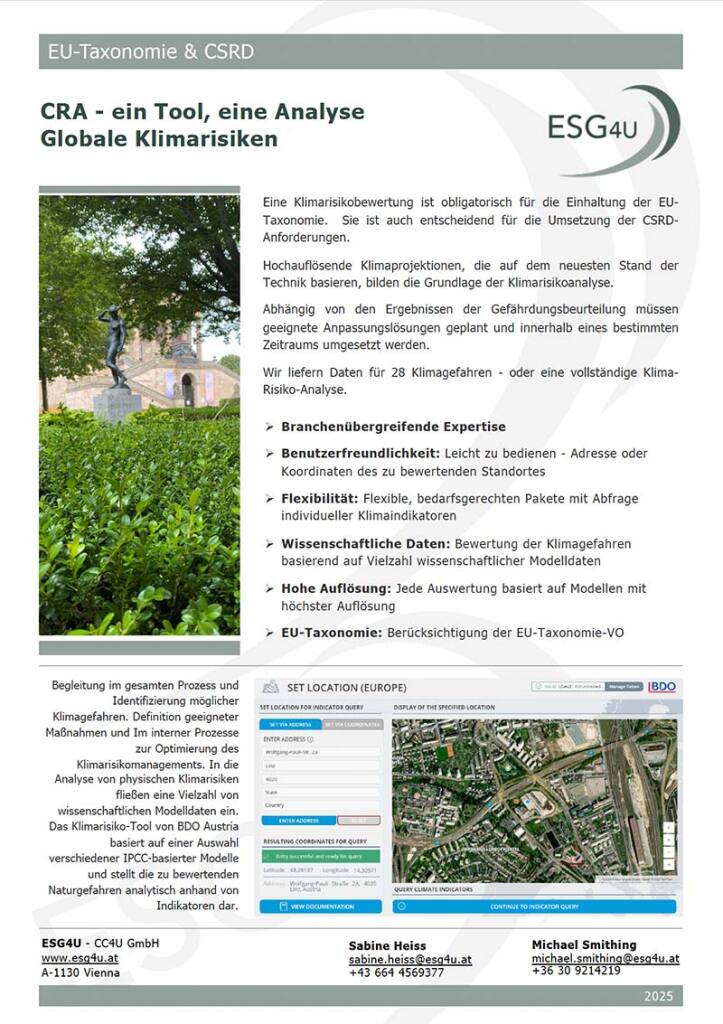Climate Risk Analysis
Climate change increases the risk of companies being affected by climate hazards more frequently and to a greater extent. An appropriate assessment of the potential impact is therefore essential.
The assessment of climate risks is crucial not only for compliance with the EU Taxonomy Regulation but also for the implementation of the CSRD. The analysis of physical climate risks is particularly important. The assessment must be based on the highest-resolution and state-of-the-art climate projection. Depending on the results, suitable adaptation solutions must be planned and implemented within a specified timeframe.
We prepare the climate risk analysis for your project in the following variants:
- Climate risk analysis – easy
Provision of climate indicators - Climate risk analysis – grand
Climate indicators, identification of possible negative effects and evaluation of the measure - Climate risk analysis – elaboration
- Climate risk analysis – report
Report, documentation, interaction, elaboration

What are corporate climate risks?
For companies, climate risks are potential negative consequences of climate change. In the corporate context, a distinction is made between physical and transitory risks.
What are physical climate risks from a company's perspective?
Physical climate risks for companies include possible damage to buildings, for example. They result from climate hazards such as drought, water shortages, heat, heavy rainfall and even rising sea levels. Some of these problems have so far been known as natural hazards whose probability of occurrence and severity are increasing due to climate change.
What are transitory climate risks?
Transitory climate risks arise for companies in particular from the gradual decarbonization of the economy, i.e. from the effects of an ambitious climate protection policy. This includes stricter emissions trading, stricter efficiency regulations and the promotion of sustainable technologies.


